COLUMBUS
And so we return to Columbus, discoverer of the New World and initiator of all the conquests of these other great men. Here, I would like to discuss an alternative view of Columbus, something that hints at a greater sense of genius than even the pre-Zinn description of his voyage.
That is: the idea that Columbus knew from the beginning where he was going.
This view stands in stark contrast to the commonly accepted story of Columbus, which (moralizing and propaganda aside) asserts that he aimed to find a passage to Asia via travelling west. This route was based on Columbus’ own geographical calculations, which cut the diameter of Earth nearly in half. The orthodoxy surrounding Columbus also maintains that he never admitted to discovering something other than Asia, and went to his grave insisting that he had landed on an outlying island of China or India.
But there is a compelling case to be made for the idea that he did not, in fact, set off in 1492 for an Asian trade route; that his proposal was intentionally and obviously farcical, meant to conceal his true knowledge.
Prior to his voyage across the Atlantic, Columbus had undertaken numerous trade voyages both north and south of Iberia. While sailing for Portugal – the preeminent navigational power of the early Age of Exploration, and notoriously guarded with their knowledge of trade winds, ports, and currents – he had learned the best navigational techniques of his day, studying maps and charts that were usually kept secret from foreigners. He had also worked as a bookseller, and despite not being a scholar by trade, was extraordinarily well-read and educated.
All of this is accepted historical truth. The traditional narrative goes on to say that Columbus had read heavily on the known geography of the Atlantic, namely Imago Mundi, a work by the French scholar Pierre d’Ailly, which argued that the ocean wasn’t nearly as large as was assumed. In the margins of Columbus’ copy (which is preserved today), he had written: “There is no reason to believe that the ocean covers half the world.”1 In support of this hypothesis, he consulted maps new and old, and found inconsistencies which could support the idea that Earth was half its accepted size. This new geography would make the east coast of Asia just barely reachable in a journey of a month or so, with stops at its easternmost islands for supplies.
He then proposed this hypothesis to King John II of Portugal – whose court scholars laughed him out almost immediately. They called his proposal a death wish, his scholarship fanciful and absurd. Columbus had long been a reputable sailor and navigator, but they saw this proposal as a lapse in judgement, or perhaps a bout of madness.
When he took the idea to Spain, Ferdinand and Isabella’s court scholars came to similar conclusions. However, they were at least slightly more open to the concept. Perhaps their court entertained this idea more seriously due to weaker maritime knowledge, or a willingness to accept radical ideas that could disrupt Portuguese naval dominance. Either way, they at least gave Columbus an audience. Even then, six years of talks consistently ended in stalemate, with only fringe elements of the Spanish court supporting Columbus.
Frustrated, he threatened to take the proposal to France, leaving in a rage. While riding out of Spain on a donkey, he was recalled and the voyage was finally funded – likely based on the calculation that an embarrassment by France (in the case of Columbus’ success) would outweigh the financial outlay of supporting his probable suicide mission. And so, Columbus set off across the Atlantic, aiming for Asia.
This story, taken at face value, makes absolutely no sense.
By the late fifteenth century, scholars knew well the size of the Earth, with astonishing accuracy given their technology. In fact, the first approximate calculation of the Earth’s circumference had been done by Eratosthenes – over a century before the birth of Christ!2 Even when his work was lost in the West, monks during Late Antiquity and the Middle Ages had completed and verified similar calculations, based on astronomical observations; additionally, Muslim scholars had come to similar conclusions during the Islamic Golden Age.
All of these calculations were widely available to scholars in Portugal and Spain, and well-known among the court astronomers and cartographers who rejected Columbus’ premise. It was instantly and obviously absurd to anyone with a serious education.
Traditionally, this absurdity is explained by asserting that Columbus just “wasn’t that good” at math or cartography. Considering his lifetime of naval success and career as a cartographer, as well as his impressive navigation across the Atlantic, this is a weak explanation. At best, it is hand-waving to fill gaps in the historical record. The alternative explanation requires some context as to the politics surrounding naval exploration in the late 1400s.
The Age of Exploration had begun only a few decades prior, pioneered by Henry the Navigator beginning in 1418 but only reaching prominence by the 1450s. At the time of Columbus’ voyage, the Portuguese were focusing most of their energies on navigating increasingly along the African coast, seeking a sea route to Asia in order to circumvent Ottoman control of the Silk Road. Spain, France, and England were desperately trying to catch up, funding similar expeditions and investing in naval technology to varying degrees.
The culture among sailors for each nation, particularly in Portugal and Spain, was thus one of entrepreneurial spirit, national pride, and ruthless competition. Naval exploration was dangerous and expensive, but incredibly lucrative; each expedition funded by the crown functioned something like a modern startup. Each proposed voyage was a venture seeking millions in investment, for a high-risk endeavor with a potentially massive upside.
In this unpredictable environment, inside knowledge and personal reputation reigned supreme. Astronomical charts, trade winds, currents: these were industry secrets, and important matters of personal and national security. Many discoveries were kept under lock and key, or only shared by word of mouth. Personal recommendations meant everything. The entire culture of captains, court scholars, and royal investors was thus one of high trust and extreme concern. Imagine a group of modern venture capitalists, their analysts in tow, considering the latest proposal of someone who’s had a dozen successful startups and exits; this was the situation between Columbus at the Portuguese, then Spanish, royal court.
It was in this environment that Columbus made his proposal, which was immediately recognized as ridiculous. His claims about the size of the Earth were demonstrably false; and, even if they were true, the distance of the voyage stretched the limits of publicly-known sailing techniques.
On top of this, Columbus asked for laughably generous terms. Namely, he requested a 10% share of all ongoing trade along his route, as well as governorship of any lands conquered in the voyage. By contemporary standards, this was a massive ask. If he truly did find a route to China, trade with the East would immediately dominate the Spanish economy, and other European powers would begin using the same route, unencumbered by such a massive cut given to the discoverer.
Additionally, the idea that Columbus would conquer lands in East Asia was bold, to say the least. From the writings of Marco Polo and dozens of other sources, scholars of Columbus’ day (and Columbus himself) knew that East Asia was controlled by vast, powerful empires, none of which he could conquer with a few lightly-armed men, thousands of miles from support.
So, in total: Columbus’ math was drastically wrong; his terms were absurd given the stated goals of the voyage, and these goals made very little sense in context. What are investors meant to conclude from this?
That Columbus knew something he wasn’t letting on.
His proposal was intentionally ludicrous.3 Columbus was not a person prone to rash reasoning or sloppy thinking, and his recommendations said as much. These letters were high accolades from prior investors and associates, an introduction which gave him an audience at the Spanish royal court. They knew he was competent. So, the intended inference was that he presented this farcical theory to conceal something only he knew – some inside edge he couldn’t publicize.
If Columbus had openly stated that his goals were to discover and conquer an unknown continent across the Atlantic, the risk of another group setting off first would be too great. Again, navigation at this time was dominated by secrecy and intense competition. He couldn’t risk losing that edge to a competitor.
But where did Columbus get this idea? What actually was his insider information?
This is where we see a deeper genius in Columbus, and get a better sense of the brazen courage involved in his voyage across the Atlantic. His pieces of evidence for the New World, when taken alone, were little more than legends and rumors. But, when taken in combination and approached with rigor, they provide a more comprehensive image of his voyage as a highly intentional act, based on rumors and legends carefully examined and combined into a groundbreaking revelation.
First of all, as a Portuguese sailor and captain, Columbus would have certainly known about the rumors of lands to the west. Numerous Portuguese captains had made unsuccessful voyages deep into the Atlantic, looking for islands or perhaps continents – for example, Fernão Teles in 1475 and Fernão Dulmo in 1486.4 These voyages were based on old legends of the island of Antilia in the western Atlantic – as well as rumored sightings of land in the region, by Portuguese captains heading toward the Cape of Good Hope.
When travelling south, sailing ships had to swing west from the coast of Africa, as trade winds there were more favorable than those along the coast of Africa; for decades, numerous historians have argued that Portuguese ships, blown too far west of this path, were likely the first to sight the outlying islands of the Americas. However, these expeditions probably never landed – or, if they landed, did not survive the return trip. This argument was recently bolstered by the uncovering of a Portuguese nautical chart dated to 1424, which shows Antilia as an island in the western Atlantic, at a corresponding location to the vanguard islands of the New World, or perhaps even the easternmost reaches of Brazil.5 This charted landmass lacks detail (it is simply recorded as a square island), suggesting that it was merely sighted but not explored. While this era was driven by men who felt a call toward new frontiers, it was still heavily based around commerce; such an unplanned landing would be extremely risky for a merchant vessel, a fact which could explain the lack of investigation. The critical point, though, is that Portuguese sailors knew of something across the Atlantic – even if they hadn’t yet explored it. Columbus would have almost certainly been privy to these rumors, as well as maps which charted the presence of untouched lands in the western Atlantic.
But this is not all: consider also the Viking settlement of Greenland and North America, undertaken and abandoned centuries prior to the Age of Exploration. This act was not known by scholars at the time, but it had been recorded in legends and rumors among Nordic seaside towns.6 This is a notion that Columbus, as a navigator and heavy reader, would have likely been interested in – and something he would have had access to during his time in Iceland or other northern ports. Similar tales existed in the annals of Irish cultural history: for example, stories of the monk Saint Brendan, who had allegedly travelled to modern-day Canada on a leather-skinned ship.7
Again: myths, legends, rumors. Vague notions of something being out there, but without a clear guide. When Columbus’ thinking is understood in this more complete context, his note in the margins of Imago Mundi takes on a decidedly different tone:
There is no reason to believe that the ocean covers half the world… Not because the Earth is half-sized, but because there’s something there!
After coming to this opinion over years of reading and research, Columbus knew that it was the most valuable “alpha” of his era, perhaps of all time. His ridiculous proposal hinted that he knew some piece of critical information, something so important that he refused to even reveal it. But it was information he was willing to bet his life on. The hand-wavy math, the absurd terms – these were hints that something far greater than trade with China was at stake.
Later quotations usually cited in support of the traditional theory – that Columbus died thinking he had landed in Asia – also take on a different tone when viewed in light of the secretive, competitive world of fifteenth-century exploration. For example, Columbus had the entire crew of his third voyage take an oath not to counter the interpretation that they had landed on an Asian island chain; he threatened a massive fine and the “cutting of the tongue” upon anyone who publicly said otherwise.8 This act is often cited as proof of Columbus’ megalomania, or his rigidity of belief – but does it not seem more like a futile attempt to keep his discovery of the New World a secret?
Other sources cited in support of the traditional framework should also be called into question by Columbus’ extreme penchant for secrecy. On the initial voyage, he kept separate captain’s logs, one to appease his fearful crew and one for private use. He wrote his journal entries in Greek, maintaining one for submission to the Spanish crown and one for personal writing. Even his signature was a cipher, with an unclear meaning that still draws debate today. Taking this into account, should we not survey his actions more closely for potentially layered meanings? The subtext of his request to the Spanish court certainly suggests a deeper level of thinking than its stated explanations, and should call into question the interpretation of other, later acts.
It is also worth noting that Columbus’ “new model” of the world placed the eastern coast of Asia at almost exactly the same place as the east coast of the Americas – quite the coincidence, considering that there are only two true east coasts in the world. Whether by rumor, now-lost texts, or secret maps, Columbus had concluded that a landmass existed and derived its approximate location. With his navigational knowledge and some careful planning, he had also solved how to get there and return safely, using trade winds and the currents of the North Atlantic gyre.
Even with this knowledge, the trip across the Atlantic was completely conjectural, a bet with the equivalent of millions of dollars and hundreds of men’s lives – Columbus’ included. It was an incredibly risky enterprise, the contemporary equivalent to the moon landing. The math had been worked out, and the technology tested… but the execution was still a massive risk. It would require shrewd leadership, which Columbus certainly provided in the arduous journey.
Columbus’ management of the newly-discovered territory is divisive today, but this shrewd leadership and visionary daring cannot be denied. Everyone who heard of the voyage told him it was suicidal, impossible; even the crew had second thoughts midway through, threatening a mutiny. But he never faltered in his dedication to pushing the boundaries of what was possible. In that sense Columbus was a true frontiersman, venturing into the unknown with lofty goals and no way home.
And, perhaps, a sense of genius that has gone unappreciated for far too long.
Footnotes
1Weiner, Eric. “Coming to America: Who Was First?” NPR, 8 October 2007.
2Eratosthenes and the Circumference of the Earth. Nature 152, 473 (1943).
3The theory of Columbus having deduced the existence of the New World has been approached by numerous thinkers, but this specific framework was first proposed by The American Sun in 2022.
4Josephy Jr., Alvin M. “Was America Discovered Before Columbus?” American Heritage, April 1955, Vol. 6 Issue 3.
5Ibid.
6Linden, Eugene. “The Vikings: A Memorable Visit to America”. Smithsonian Magazine, December 2004.
7Carberry, Seán. “Did St. Brendan arrive in America before Christopher Columbus?” Irish Central, 9 October 2022. References Navigatio.
8“The Second and Third Voyages of Christopher Columbus”. Encyclopedia Britannica.

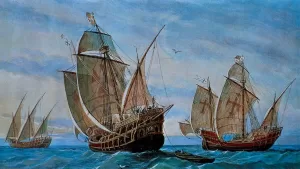

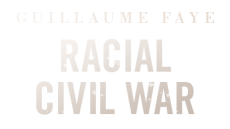

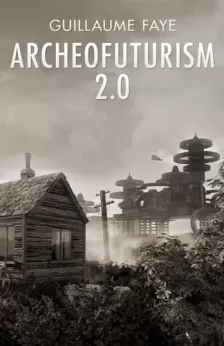


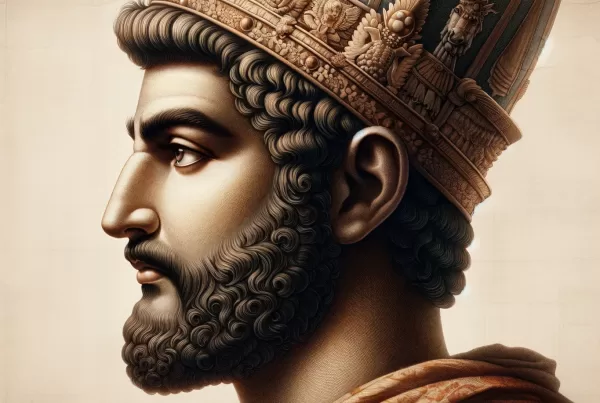
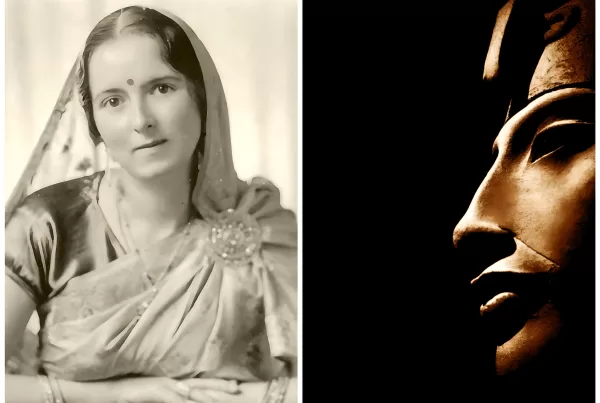

I had the opportunity in 1976 to participate in the rigging and maiden voyage of a “replica” Santa Maria out of St Petersberg, Florida, to the degree it could be recreated with what is known about the original. Indeed, she looked very much like the vessel in the painting above. My impression of this sailing technology, being familiar with later designs when working for the San Francisco Maritime Museum, was that it was a miracle the world had been explored using such primitive vessels with horrible sailing characteristics. I guess every technology has to start somewhere – look at the Wright Brothers first “flyer”, little more than a large box kite with an unreliable, under-powered engine.
Many West Africans, Masons, Templars, and high court officials in multiple nations knew of the new world. Substances only native to South America have been found in Egyptian tombs. Before the Ice Age receded Northern Europeans made it to North America in small numbers, their tools have been found deep enough in the soil to date them appropriately. Vikings came to Canada later.
Is it possible Columbus obtained guarded information from the Templars? who fled 14th-Century persecution and may have secreted their valuables in the ‘undiscovered lands’?
It’s possible for both things to be true, that Columbus had evidence that a landmass was closer than anyone expected AND thought it was Asia, in spite of the calculations of the Earth’s larger circumference which therefore just must have been wrong somehow. I think this is the most likely explanation.
Please! straight-up question: what are we to make of the legendary story that Columbus quelled conflict with the New Worlders by accurately predicting a lunar eclipse, saying he would call the dragon down to devour all. When the conflict subsided and the eclipse passed, the New Worlders viewed Columbus with awe and obeyed him.
I am fascinated that Columbus could predict an eclipse on the other side of the world. Is it true?
This is an interesting article, but the writer referred to Columbus as Portuguese. Columbus hailed from Genoa, in what is now Italy. He was Genovese, not Portuguese. Getting that fact wrong called into question the rest of the information, although that does not detract from his portrayal of Columbus as a genius and hero. He was both, with extra points to Ferdinand and Isabella for their foresight and backing. Spain ended up ruling New Spain for three hundred years before finally losing the Mexican revolution in what is one of the most fascinating stories of conquest and settlement ever.
I salute your defense of Columbus. Please investigate the extensive research done by Lyndon LaRouche’s organization on the connection between the Renaissance thinker Nicholas of Cusa, Arturo Toscanelli, and Canon Fernand Martins. You can find this on LaRouche pub.com, by searching for Toscanelli and Columbus. Cusa outlined a mission, Toscanelli provided maps and distance estimates to Martins in Portugal, who gave this to Columbus. Let me know what you think.
Craig HOLTZCLAW. holtzcraig09@gmail.com
Whites will eventually be exterminated unless they take action.
Whites didn’t survive this long only to be exterminated by queer pronouns and mooching third-world criminals. We’ll survive no matter what they throw at us.
I am torn. It is in our nature to explore, but wouldn’t we have been better off just staying in Europe, ultimately? All the places we settled ended up flooding out own borders in the end.
If not the Europeans discovering America, then who? It would have been discovered eventually. History would be entirely different and certainly not necessarily better.
As if Europe is not flooded with immigrants, mostly military aged african Muslim men
I am as proud of Europeans who ventured far from home way back when as I am of our own time.
Among my favorite speeches of All-Time! is JFK, September 12, 1962 at Rice University in Houston Texas explaining WHY!? go to the Moon. It’s easily available on the internet, only 20-minutes long.
take note: Africa has 26,000 miles of coastline … no one ever left Africa to explore what lay beyond
Colombus looks like a complete conqueror in the graphic here. Didn’t they get rid of his holiday in America now? What a joke.
Wagnerian, you wouldn’t have the courage to put a rowboat on a lake let alone sail across the ocean to unknown places. It’s cowardly sissy weaklings like you who always have the biggest mouths.
It’s important we pay the proper respect and honor to our European ancestors who conquered and spread our people across the world. Alaric is doing great work covering this.
Totally. So sick of the weaklings being promoted as heroes.
What would you know about heroism, you big mouthed pansy?
This is a super interesting series. Make empire-building great again!